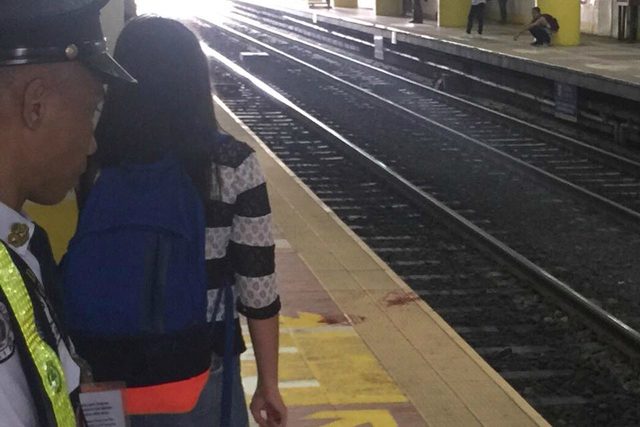SUMMARY
This is AI generated summarization, which may have errors. For context, always refer to the full article.

MANILA, Philippines (UPDATED) – When Charlie Jandic rushed to the aid of a woman who lost her arm in an accident at the Metro Rail Transit 3 (MRT 3) Ayala station on Tuesday, November 14, she was just being true to form: doctors – in her case, a medical intern – should be quick thinking and serve on the spot when needed.
With her heroic act, however, she may just find a proposed law named after her.
Kabayan Representative Ron Salo, who has previously filed House Bill 4955, seeking to create a national emergency medical services system, said he would move to rename the proposed law’s short title into “The Dr. Charlie Jandic Emergency Medical Services System Act of 2017” once the House committee on health tackles the measure.
Jandic, an intern at the Chinese General Hospital, was the one who attended to 24-year-old Angeline Fernando, who fell onto the railway tracks of the MRT’s Ayala station on November 14. Her right arm was cut off as a result of the accident, although it was sewn back on after an hours-long surgery.
According to an Interaksyon report, Jandic was about to exit the station when she heard a thud and people screaming. She want back onto the main platform of the station and saw Fernando on the train tracks. Once the 24-year-old had been laid onto the platform, Jandic began to do her job.
She used a cardigan and a policeman’s belt as a makeshift tourniquet to stop Fernando’s bleeding. She also instructed onlookers to retrieve the severed arm. Jandic stayed with Fernando throughout the latter’s ordeal – from the time she was brought onto the platform, to when she was brought to the station clinic, and up until Fernando was brought to the nearby Makati Medical Center.
Jandic has been lauded as a hero for her actions, a label the 27-year-old medical intern herself has rejected. “I just did what was right. The way I see it, if it was anyone with a medical background yesterday, I think they would have done the same thing. It just so happened that I was there,” she told Interaksyon.
Salo also called on the MRT 3 management and the transportation department to identify all individuals who helped Fernando so “they could be properly commended for their quick thinking.”
National emergency medical system
HB 4955, if passed into law, would create a National Emergency Medical Services System (EMSS) made of 5 core services: emergency medical dispatch, emergency response and care, emergency transport, inter-agency referral and transport, and command and control.
Should the bill become a law, all local government units (LGUs) will be required to create a dispatch center where locals can call in case of emergency. The dispatch protocols will be crafted by the health department and the EMSS council.
The bill will also create a single national emergency number, similar to the 9-1-1 number in the United States.
The 911 national emergency system was put in place by President Rodrigo Duterte in the early weeks of his administration. But its implementation has varied.
Salo explained that a law would institutionalize the national emergency number and make sure that it gets funding every year, regardless of who is in power.
Senate version
In the Senate, Juan Edgardo Angara sought the passage of his Senate Bill 1573, which also seeks to mandate the development and institutionalization of emergency medical services system in local government units.
He cited data from the 2013 Asian Conference on Emergency Medicine that the Philippines only has 3,300 recognized emergency medical service personnel. He also said that out of the approximately 1,800 hospitals in the country, only 200 or 11% have facilities that can provide quality emergency medical care.
“We need to reverse this situation by mandating local government units to establish emergency dispatch centers with adequate and qualified personnel,” Angara said.
SB 1573 mandates government and private institutions – including malls, parks, and transport stations – to have at least one automates defibrillator to treat sudden cardiac arrest.
It also tasks the National Telecommunications Commission “to develop a program for the adoption of a single national emergency number that would enable the public to access emergency medical services.” – Rappler.com
Add a comment
How does this make you feel?
There are no comments yet. Add your comment to start the conversation.